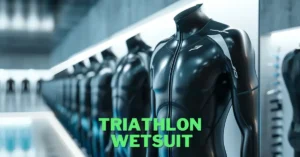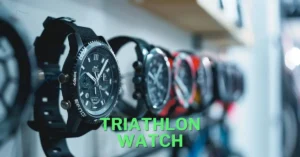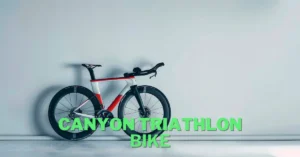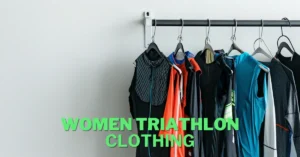📦 FREE Shipping
The 7 Best Triathlon Helmet: Gear Up for Race Day 2024!
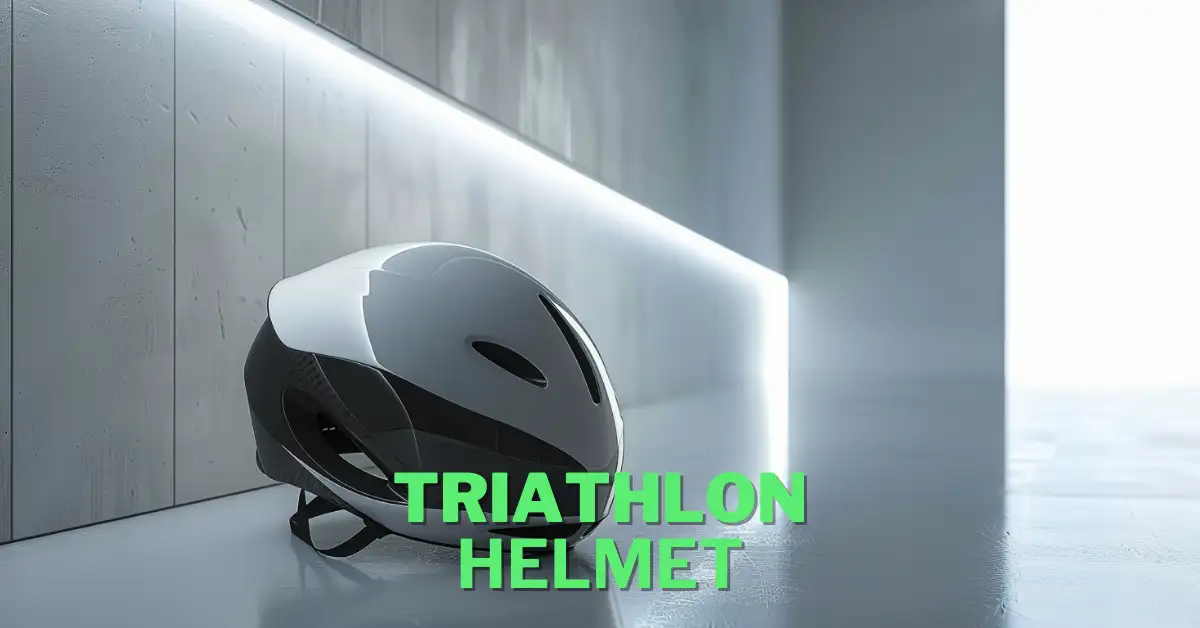
Triathlons are grueling endurance events that combine swimming, cycling, and running, pushing athletes to their limits. Equipment choices can have a significant impact on a competitor’s performance, and the selection of a triathlon helmet is a prime example of gear that can influence race outcomes. Crafted for efficiency and speed, these helmets are a blend of science, aerodynamics, and sports engineering designed to shave off precious seconds during the cycling leg of the race.
I understand that a triathlon helmet goes beyond ordinary cycling headgear. It’s tailored for both protection and performance. The design features like teardrop shapes and integrated visors are not just about aesthetics; they’re there to reduce air resistance and increase speed. Ventilation also plays a critical role, as it helps manage a triathlete’s temperature during the intense cycling phase.
When I’m eyeing a new triathlon helmet, I focus on fit, comfort, aerodynamics, and ventilation. The right fit ensures the helmet functions correctly in the event of a crash, while comfort keeps distractions at bay over long distances. The aerodynamics can offer a competitive edge, allowing me to cut through the wind more efficiently. Ventilation is pivotal for maintaining my cool literally and figuratively, as overheating can sap energy and hinder performance.
Selecting the ideal triathlon helmet is crucial for achieving my best performance and staying safe on the race course. I’ve dedicated countless hours researching and examining various models to determine the helmets that strike the perfect balance between form, function, and safety, ensuring that I can focus on pedaling my way to a new personal best.
Top Triathlon Helmets
I’m thrilled to share my selection of the best triathlon helmets out there. With a focus on aerodynamics, ventilation, and comfort, these helmets are designed to help you slice through the wind while keeping your head cool and secure. Each pick is a culmination of careful research, taking into account the latest technology and design innovations to boost your performance. Whether you’re a seasoned triathlete or just starting out, the right helmet can make a significant difference in your race. Let’s dive into the models that stand out this season!
Giro Aerohead MIPS Helmet

If you’re seeking a helmet that strikes an excellent balance between aerodynamics and cool comfort, this is the one for you.
Pros
- Incredible airflow with Wind Tunnel ventilation
- Eye shield offers brilliant clarity and easy magnetic attachment
- MIPS system adds a safety bonus against rotational forces during impacts
Cons
- Eye shield can be a bit fiddly to remove and place back during transitions
- Slightly on the higher end of the price spectrum
- May not fit all head shapes comfortably—ensure you check sizing charts
Slipping on the Giro Aerohead MIPS, I immediately noticed the featherlight comfort; the helmet felt as if it melded to my head. The crisp and clear Zeiss Optics visor snapped in magnetically, providing an expansive view of the road ahead without a hint of distortion.
Out on the bike, the cooling system really proved its worth; Wind Tunnel ventilation whisked away sweat even during the most intense parts of a long ride. It’s impressive how the cool air flows over my head, never allowing heat to build up.
As for the MIPS technology, it’s reassuring to know it’s there, designed to protect my brain with that extra layer of security. The feel and functionality of the helmet exude quality and care in design, pointing to Giro’s dedication to cyclist safety and performance.
After the ride, I found the visor easy to flip up for a more casual look while discussing the ride with friends. The helmet’s aerodynamic shape has earned appreciative nods from fellow triathletes. However, when first using the eye shield, it took some practice to get the hang of removing it for cleaning. Still, a small price to pay for such top-notch protection and visibility.
In short, this helmet has become a key ally in my triathlon endeavors, combining sleek aerodynamics with critical safety features. It’s truly a game-changer every time I’m on the course.
SLS3 Aero Helmet

I’d recommend snapping up the SLS3 Triathlon Helmet for its impressive ventilation and lightweight comfort, which are game-changers for endurance cycling.
Pros
- Exceptional airflow keeps you cool
- Visor provides convenient UV protection
- Extremely light and barely noticeable
Cons
- One size may not fit all comfortably
- Visor cannot be attached before wearing
- May feel warmer than traditional helmets
The moment I hit the road with this helmet, the air just flowed right through, making my race feel like a breeze—literally. Four front and back vents work overtime to ensure I stay cool and dry, slicing through the worst of the heat with ease.
That magnetic visor is a stroke of brilliance. No need to fumble for sunglasses; just a quick flip, and I’m shielded from the sun’s glare. Plus, it’s a real time-saver during those high-pressure transitions between triathlon stages.
Weight is crucial, and this helmet is a feather on my head. At just 279 grams, I zoom past the competition without any extra drag, enjoying the freedom of near-weightlessness. Sure, I’m protected, but I also forget I’m wearing it—that’s how comfortable the SLS3 Triathlon Helmet is.
Giro Vanquish MIPS

I’d wholeheartedly recommend the Giro Vanquish MIPS for its comfort and cutting-edge features that enhance any triathlon performance.
Pros
- Advanced TransformAir Technology maximizes aerodynamics
- Magnetic Vivid shield by Zeiss enhances visibility
- Stealth shield dock allows for easy storage of the visor
Cons
- Visor may take time to get used to for perspiration management
- Higher price point could be a barrier for some
- May require adjustments to fit glasses underneath
After taking the Giro Vanquish MIPS out for a spin, the first thing that struck me was the precision of the fit. The helmet felt snug without squeezing my head, a true testament to its design.
The magnetic shield is a game-changer. Swapping it out mid-ride is seamless, something that really adds value when transitioning from different lighting conditions. This, coupled with the TransformAir Technology, made me feel like I was slicing through the wind more efficiently than ever.
Lasting through a full triathlon, comfort is key, and the Giro Vanquish MIPS doesn’t disappoint. Even as I pushed my limits, the helmet’s progressive layering of the EPS liner handled the buildup of sweat and heat admirably. Indeed, this lid has earned its place as an essential part of my gear set.
SLS3 Aero Helmet

If you’re looking for a helmet that could make a real difference in your next triathlon, the SLS3 Aero Helmet might just be your next race day companion.
Pros
- The magnetic visor is pure genius – flips up easily even when the competition gets intense.
- Its featherweight nature means I barely notice it’s there, leaving me to focus solely on my performance.
- Superb aerodynamics, I feel the speed difference compared to traditional helmets.
Cons
- One-size-fits-most could be tricky; make sure to measure your head before purchasing.
- Ventilation, while good, doesn’t compare to a standard road helmet – can get warm on hotter days.
- The visor’s magnetic system is cool, but attaching it before putting the helmet on isn’t an option.
I immediately noticed the snug and comfortable fit of the SLS3 Aero Helmet, which stayed put throughout my entire ride. The aesthetic of the helmet had me feeling like a pro as I zipped down the road. Still, what truly impressed me was the feather-light feel – it’s like the helmet wasn’t even there, allowing me to keep my mind locked on beating my best times.
Riding against the wind often feels like battling an invisible force, but with this helmet’s aerodynamic design, I sliced through the air with what seemed like less effort. Plus, the magnetic visor is a nifty addition that provided excellent clarity and UV protection, which meant no more fumbling with sunglasses whilst pedaling at high speeds.
Despite its many positives, there’s a bit of a trade-off when it comes to cooling. With fewer vents than a regular road helmet, I felt the build-up of heat during the more grueling sections of my ride. And while the one-size approach is convenient, it leaves little room for error in sizing – definitely measure twice before ordering.
In summary, I’d say this helmet is a solid choice for triathletes looking for an aerodynamic advantage. The SLS3 Aero Helmet has the potential to be a trusty ally on race day, provided the fit is right and you’re ready to trade a bit of ventilation for speed.
Zacro Lightweight Helmet

After taking the Zacro Lightweight Helmet for a spin, I believe it’s a solid choice for any cyclist prioritizing safety and comfort without breaking the bank.
Pros
- Ventilation keeps you cool, even on sweltering days.
- Adjustability ensures a snug and secure fit for various head sizes.
- The removable visor and pads add to the helmet’s versatility and hygiene.
Cons
- The visor feels a bit delicate and may not withstand heavy use.
- It may not suit those seeking a high-end helmet with advanced features.
- Limited styling options for those who prefer more color variety.
On my latest ride, the Zacro Adult Bike Helmet impressed me with its lightweight feel; I barely noticed it was there! The 18 air vents effectively channeled the breeze across my scalp, keeping me cool as I climbed the steep hills. I’ve got to say, for a product designed with functionality in mind, it definitely delivers.
I adjusted the dial at the back, and voilà, the perfect custom fit—it felt like it was made for my head. The straps were a cinch to adjust, providing that snug fit you want from a safety gear, without any pressure points or discomfort.
Cleaning was straightforward too. After a muddy trail, I simply removed the inner padding and gave it a quick wash. The helmet was ready for another day of riding in no time. It strikes a fine balance between being robust enough to make me feel secure on the road, yet light enough that I forget it’s there!
In conclusion, Zacro’s offering is a commendable combination of comfort, safety, and convenience. Whether you’re commuting or enjoying a weekend trail, this helmet checks the essential boxes for a safe ride.
OutdoorMaster Helmet

I’m all for safety and style, and this helmet delivers on both—highly recommend for any skater or cyclist!
Pros
- Remarkably sturdy build enhances safety.
- Incredible ease of adjusting for the perfect fit.
- Ample ventilation keeps the head cool.
Cons
- Bulkier than some may prefer.
- Limited color options.
- Not specialized for high-speed competition cycling.
Fresh out of the box, the OutdoorMaster Helmet felt solid in my hands. I tested its durability on a gritty city skate with no complaints. The thickened EPS core gave me a confidence boost, cruising past uneven sidewalks, knowing my head was well protected.
Adjusting the fit was a breeze. The dial system clicked satisfyingly into place, and the chin strap was a soft touch against the skin. The helmet sat snug on my head, didn’t wobble, yet didn’t pinch—a delicate balance well achieved.
Halfway through my ride, I really started to appreciate the ventilation system. Despite the sun beating down, my head remained surprisingly cool, a testament to the design’s effectiveness.
To be frank, it’s not the sleekest helmet on the block. The bulk could throw some users off, especially those accustomed to streamlined models. And while black is timeless, I wouldn’t mind seeing more vibrant options to match my gear.
While it’s not cut out for professional triathlon contestants gunning for new speed records, for an average Joe like me, picking a reliable, no-frills helmet, this hits the nail on the head.
I used it not just for my skateboard escapades but also for casual biking around the neighborhood. It ticks all the boxes for everyday protection, and that’s what matters.
VICTGOAL Bike Helmet

If you’re in need of a reliable triathlon helmet that balances comfort with safety, this is a fantastic choice.
Pros
- Built-in rechargeable light enhances visibility for safer rides
- Lightweight design with 21 vents keeps the head cool
- Robust construction with PC shell and EPS foam for impact protection
Cons
- Goggles can fog up in humid conditions
- Rear light can be tricky to switch on while wearing the helmet
- Adjusting straps may take extra time for a perfect fit
When I first set out on my latest cycling adventure, the VICTGOAL Bike Helmet’s rechargeable light was immediately impressive. It lasts throughout long rides, ensuring I’m seen by fellow cyclists and motorists, a crucial factor during dusk or dawn training sessions. Charging is quick and painless, which is exactly what I need between my busy triathlon training schedules.
The cooling factor of this helmet cannot be overstated. With 21 vents, I could feel the breeze gliding over my scalp, keeping the dreaded heat at bay when pushing my limits uphill. Plus, the light weight means I hardly notice it’s there, and that’s exactly what I want from a helmet—protection without the bulk.
The protection this helmet affords gave me peace of mind. Constructed with a sturdy PC shell and foam that absorbs impact, it’s a guardian for your head. When I hit a rough patch and my bike jerked, I had full confidence in this helmet’s ability to handle any mishaps.
Occasionally, I found the goggles got a little steamy during more humid rides, but a quick lift and drop cleared them up. The rear light’s switch was a bit fiddly while wearing gloves, but setting it pre-ride solved that issue. Adjusting the straps took me a moment to get just right, but once configured, they provided a secure, custom fit.
This VICTGOAL helmet, from the sleek design to the functional bells and whistles, bolstered my triathlon training with its dependable features. The occasional cons are minute when compared to the overall security and comfort it provides. Whether you’re a seasoned triathlete or just starting out, it brings performance and peace of mind to every ride.

Buying Guide for a Triathlon Bike Helmet
Fit and Comfort
When selecting a triathlon helmet, comfort is paramount. My priority is to find a helmet that fits well. I measure my head circumference to ensure the helmet size matches. A good fit means it’s snug but not overly tight. It should sit level on my head and not rock back and forth.
- Measure head circumference: Use a flexible tape measure.
- Check the helmet level: It should sit about an inch above your eyebrows.
- Choose adjustable features: Look for a retention system and straps for fine-tuning the fit.
Aerodynamics
Aerodynamics can shave seconds off my time. I consider helmets with a teardrop shape and smooth outer shells. However, the more aerodynamic a helmet is, the less ventilation it might provide, so I balance my need for speed with comfort.
- Teardrop shape: Less wind resistance.
- Smooth outer shell: Decreases drag.
Ventilation and Weight
Proper ventilation is crucial for keeping cool during a race. I opt for helmets with sufficient venting. However, more vents can increase the weight, so I choose models that strike a balance between cooling and lightweight design.
- Front vents: For maximum air intake.
- Exhaust vents: To draw hot air away from the head.
- Weight consideration: Aim for a lightweight helmet that still provides adequate protection.
Safety Standards
Safety is non-negotiable. I always check the safety certification, such as CPSC or CE, to ensure the helmet meets stringent safety criteria.
- Look for safety certifications: CPSC, CE, or other recognized standards.
- Ensure coverage: Adequate protection in case of an accident.
Visibility
On the road, being seen is as important as seeing. I pick helmets with high-visibility colors or reflective elements. This ensures that I stand out in varying light conditions.
- High-visibility colors: Bright colors that catch the eye.
- Reflective elements: For increased visibility in low light.
By considering these key features, I make an informed decision to get the best product to meet my triathlon needs.
Frequently Asked Questions
I’ve gathered the most pertinent questions about triathlon helmets to enhance your knowledge and decision-making for race day.
What kind of improvements can I expect when using an aero helmet in a triathlon?
Using an aero helmet, I’ve noticed a significant reduction in drag, which translates to energy savings and potentially faster bike split times.
How do triathlon helmets enhance performance compared to regular road bike helmets?
Triathlon helmets are designed with aerodynamics in mind. They typically have a smoother surface and a tapered back, which help me slip through the wind more efficiently than with a regular road bike helmet.
Are integrated visors on triathlon helmets beneficial for both aerodynamics and visibility?
Absolutely, the integrated visors on triathlon helmets streamline airflow over my face and provide clear visibility without the need for separate eyewear which can create additional drag.
What factors should I consider when selecting the best triathlon helmet for my race day?
When selecting a triathlon helmet, I consider the helmet’s weight, aerodynamics, fit, comfort, and adjustability. It’s crucial that it feels like a part of me when racing.
How important is helmet ventilation in maintaining comfort during a triathlon?
Proper ventilation is key to my comfort during a triathlon. It helps to manage sweat and keeps my head cool, which is vital for maintaining overall performance, especially in longer or hotter races.
Can you elaborate on the safety features of top-rated triathlon helmets?
Top-rated triathlon helmets include features like MIPS (Multi-directional Impact Protection System) to reduce rotational forces on the brain in the event of an angled collision, and durable outer shells designed to absorb impact.
Did you like these Triathlon Wetsuits? Make sure to check out all Workout Clothes and read about Triathlon Bikes Shoes.


